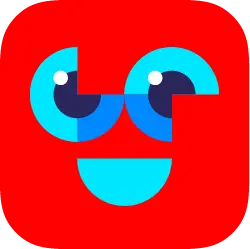German Initial Sounds Alphabet
German Initial Sounds Alphabet
Young readers start reading in German using an “initial sound alphabet” – or in German: “Anlauttabelle”. Our initial sound alphabet below is completely FREE to download, print, or open in a new browser window by right-clicking on the graphic. Have fun developing German reading and writing skills!

Initial sounds alphabet – Anlauttabelle – for beginner German students
How to use the German initial sound alphabet: The foundation for learning to read begins with learning to sound out the words. Young readers start with letters – their form and shape, and sounds-to-letter correlation. Next, early readers can build syllables and words. They sound out the words, listen to the individual sounds and write the corresponding letters with the help of the initial sound alphabet.
Using the write to read method, young students practice recognising and writing letters. At the beginning, simple words and phrases are learned using the initial sound alphabet. From reading simple words children move to reading sentences and texts fluently.
It is important to illustrate initial sounds with appropriate corresponding pictures. After young readers have successfully memorised several sounds, they can start reading syllables. In this phase it is not uncommon for children to begin to “read” some unknown words on their own. The German reading foundation stone has been laid!
A German initial sound alphabet includes both vowels and consonants.
In German-speaking countries, language experience is often based on student’s writing of stories that involves invented spelling. The initial sound alphabet assists young readers by picturing words that start with a specific sound. For example, “ein Affe“ (a monkey) illustrates the initial long German vowel “A” when “eine Ampel “ (a traffic light) is used as a visual aid for the short German vowel “A”. Similarly next to the German consonant “Sch” is the image of “ein Schaf “ (a sheep).
Developing reading by sounding out words
Reading is mostly analytical-synthetic, which means that children learn entire words and sound them out into singular sounds simultaneously. The corresponding sound-letter combination is taught in a certain order starting with the most common initial sounds (including the vowels “e, a, u, i, o” and the consonants “l, m, p, n”).
There are different types of "learn to read" strategies, each focusing on a different concept. Many strategies focus on syllables as a reading aid, others place great emphasis on exciting, appealing stories. We believe that to raise an enquiring reader, it is important that German language students are engaged by reading books with visually appealing illustrations paired with engaging topics.
Five phases of reading in German
- Learn to recognise and differentiate sounds: Learn syllables and clap them; distinguish letter shapes and forms; find rhymes and recognise letters; differentiate between upper and lower case letters with the initial sound alphabet (Anlauttabelle).
- Combining sounds and letters into words: Individual letters build words.
- From words to sentences: Reading is schooled by using first readers in which words can be combined into simple sentences.
- Learning to comprehend: Reading comprehension begins with the reading of the first syllable, students then start building their own connections while reading.
- Summarise texts and comprehend: Students start analysing the texts for the first time, applying their own knowledge and developing their enjoyment for reading.
More free resources to help you (or your children) learn German
We have flashcards matching the German initial sound alphabet; vocabulary flashcards to help learn new German words; engaging revision worksheets and more!


